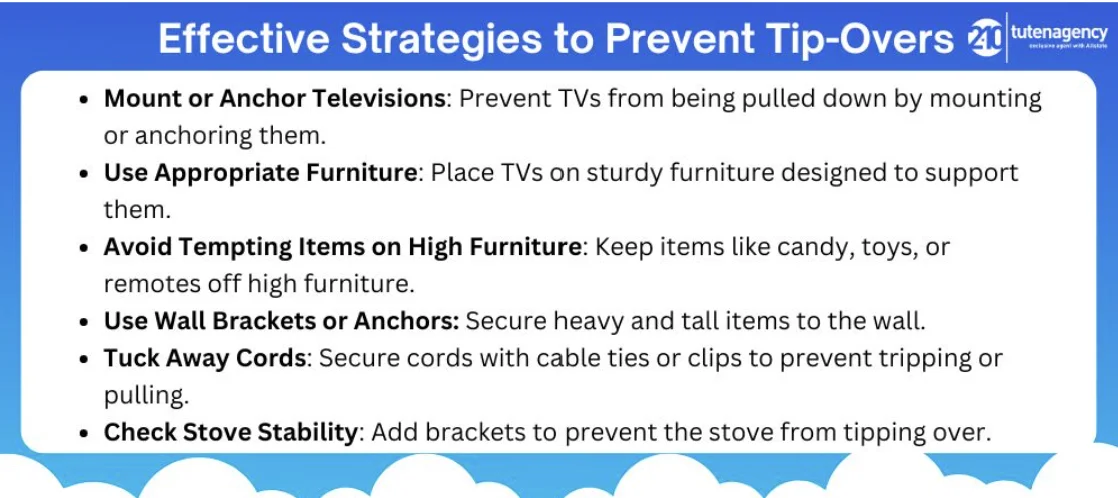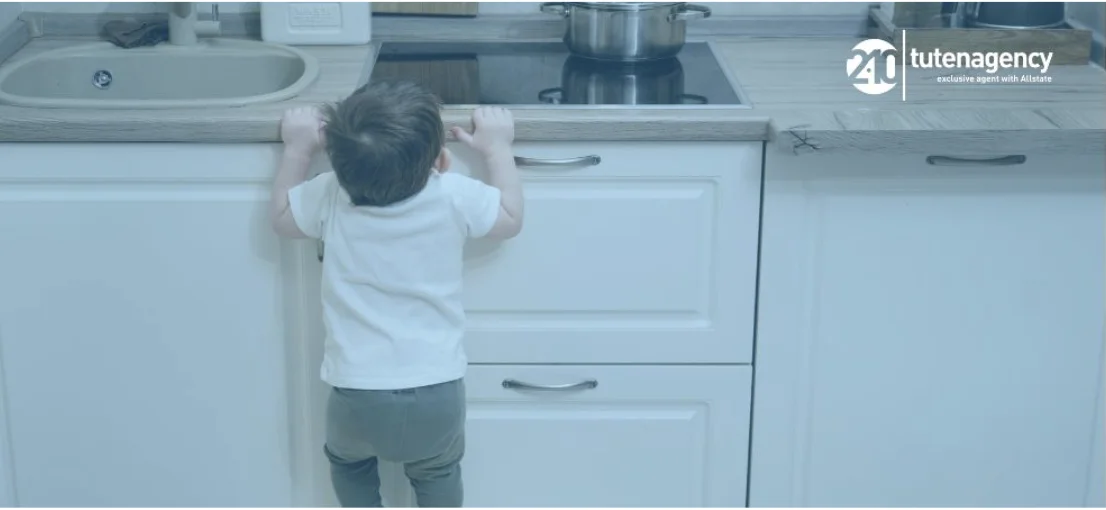Every parent wants to keep their children safe at home. However, one often overlooked danger is furniture tip-overs. When inquisitive children climb on furniture or appliances, it can lead to serious accidents, causing severe injuries or even death. Fortunately, there are simple measures you can take to prevent these accidents by identifying potential hazards and securing heavy items with wall anchors or brackets.
As reported by the Consumer Product Safety Commission, from 2016 to 2018, there were about 12,500 emergency department visits yearly for children under 18 due to tip-overs. Between 2000 and 2018, 459 children aged one month to 14 years died from these accidents.
Why Furniture Tip-Overs Happen
Furniture tip-overs usually happen when children climb on furniture or appliances. Accidents can also occur if items like televisions or electronics are accidentally hit or knocked over. Playing near furniture, tripping, or pulling on cords can also cause tip-overs.
Identifying High-Risk Furniture and Appliances
Some furniture and appliances are more likely to tip over and cause accidents. These include:
-
Chest, Bureaus, and Dressers:
These are common pieces of furniture in bedrooms and can be very tempting for children to climb.
-
Stoves:
Kids might climb on stoves to reach something on the counter.
-
Televisions:
TVs that are not properly secured can easily be pulled down.
-
Tables:
Small tables can tip over if children pull or lean on them.
Effective Strategies to Prevent Tip-Overs
Here are some practical tips to prevent tip-over accidents in your home:
Mount or Anchor Televisions
Mounting or anchoring your television to the wall or a sturdy piece of furniture is crucial. This prevents the TV from being pulled down by children.
Use Appropriate Furniture
Place televisions on sturdy furniture specifically designed to support them. Avoid putting TVs on lightweight or unstable furniture.
Avoid Tempting Items on High Furniture
Do not place tempting items like candy, toys, or remotes on top of large furniture or high shelves. Children may try to climb to reach these items, increasing the risk of a tip-over.
Use Wall Brackets or Anchors
Use wall brackets or anchors to secure heavy and tall items. Securely attaching furniture to the wall can prevent it from tipping over if a child tries to climb it.
Tuck Away Cords
Keep cords tucked away to prevent children from tripping or pulling electronics down—secure cords with cable ties or clips to keep them out of reach.
Check Stove Stability
Check your stove’s stability and add brackets if needed. This can prevent the stove from tipping over if a child tries to climb on it.

Additional Safety Measures and Best Practices
Here are some more safety tips to keep your home safe:
-
Regular Safety Checks
Check all your furniture and appliances regularly to ensure they are securely anchored. Make this a part of your routine to keep your home safe.
-
Educating Children on Safety
Teach your children about the dangers of climbing furniture and pulling cords. Explain why avoiding these actions is important and encourage them to play safely.
Conclusion
Preventing furniture tip-overs is essential for creating a safe home environment for your children. Simple steps like anchoring furniture, keeping tempting items out of reach, and teaching your children about safety can greatly reduce the risk of accidents.
By staying informed and taking proactive steps, you can ensure your home is safe for your children to explore and play.
FAQs
What should I do if my furniture is already tipping or unstable?
If your furniture is already tipping or unstable, do not wait to secure it. Move any items that could cause a tip-over out of reach of children and secure the furniture with appropriate anchors or brackets immediately.
Are there any signs that my furniture might tip over?
Signs that furniture might tip over include wobbling when touched, being top-heavy, or if it can be easily moved. If you notice any of these signs, secure the furniture right away.
How can I childproof my home if I cannot drill into walls?
If you cannot drill into walls, use heavy-duty adhesive strips or furniture straps that do not require drilling. These can be effective, but always ensure they are designed to hold the weight of the furniture.
Is it necessary to anchor all types of furniture?
While not all furniture needs to be anchored, it is crucial to secure any tall, heavy, or top-heavy items that children might climb on. This includes dressers, bookshelves, and large televisions.
Get the right coverage for your home with tutenagency
New tutenagency customers?
Quote homeowners insurance online or call (334) 502-5111 to insure your home.
Legal Disclaimer: ADVERTISING MATERIAL ONLY. Do not rely on this site or this article for legal or financial advice. The information provided on 210agency.com is strictly for educational purposes and to provide you with general educational information. Since state laws and financial regulations are subject to change, please schedule an appointment with an attorney or qualified financial advisor in your area to further discuss your personal situation. This public information is neither intended to, nor will it, create an attorney-client or financial representative relationship.

